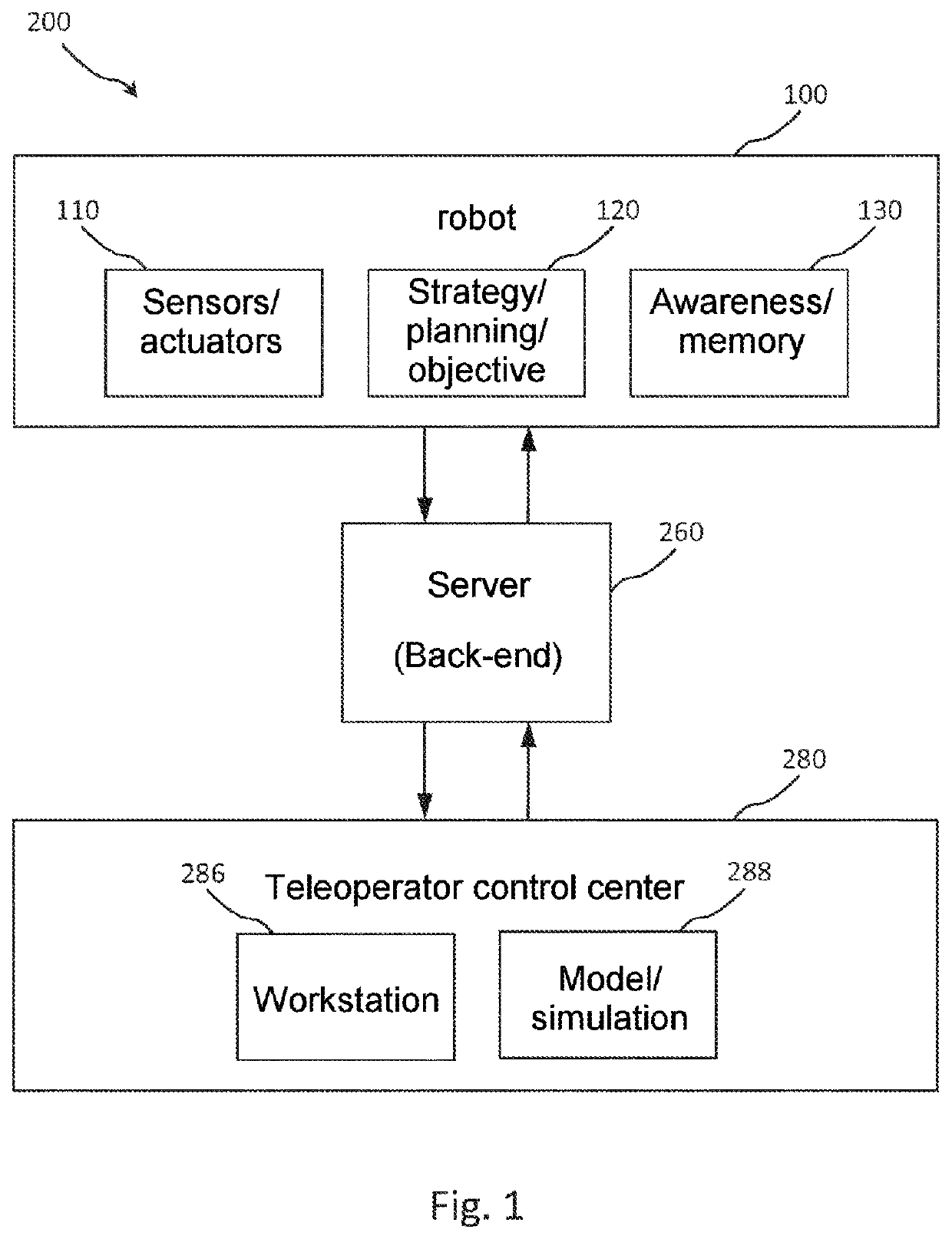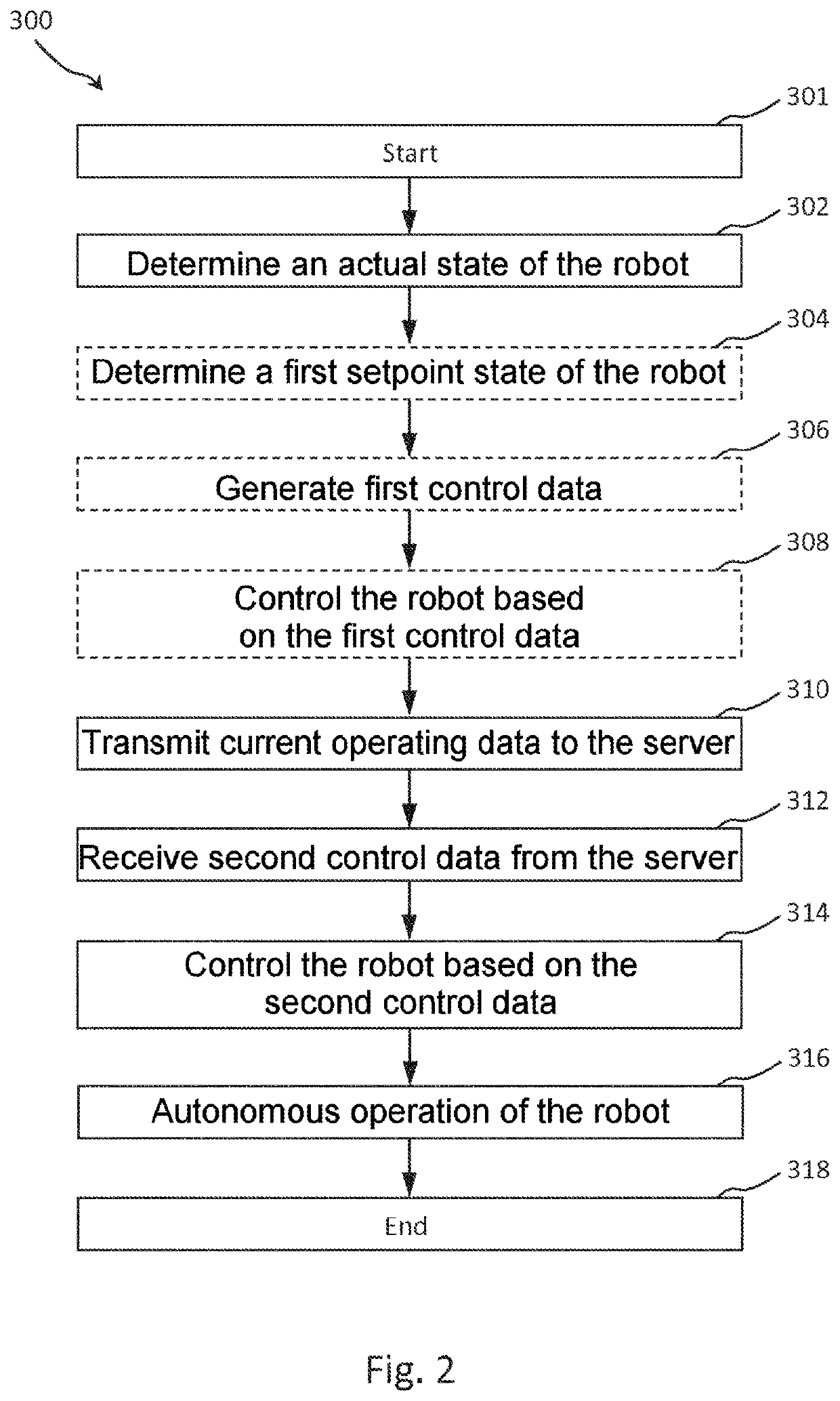Scalable Remote Operation of Autonomous Robots
a robot and remote operation technology, applied in the direction of vehicle position/course/altitude control, process and machine control, instruments, etc., can solve the problems of affecting the safety of automated vehicles, affecting the safety of autonomous vehicles, and unable to determine the operating parameters of robots, etc., to achieve the effect of affecting the safety of further operations
- Summary
- Abstract
- Description
- Claims
- Application Information
AI Technical Summary
Benefits of technology
Problems solved by technology
Method used
Image
Examples
Embodiment Construction
Detailed Description of the Drawings
[0035]FIG. 1 depicts a block diagram of a system 200 for the teleoperation of robots 100, according to embodiments of the present disclosure. A robot 100, for example, an automated vehicle, comprises a sensor system / actuator system 110 comprising one or several sensors for detecting surroundings around the robot (for example, radar, lidar, infrared, ultrasound), and one or several actuators for operating the robot 100. Further, the robot 100 comprises an electronic control unit 130 which, inter alia, is configured to receive data from the sensor system, to process the data, and to control the actuator system based on the received data and / or the processing. Memory, communication interfaces, processors, and the like are integrated into the electronic control unit and / or connected thereto. The robot further comprises a suitable representation 120 of a superordinate strategy, one or several plans, and / or objectives, which are configured to define one...
PUM
 Login to View More
Login to View More Abstract
Description
Claims
Application Information
 Login to View More
Login to View More - R&D
- Intellectual Property
- Life Sciences
- Materials
- Tech Scout
- Unparalleled Data Quality
- Higher Quality Content
- 60% Fewer Hallucinations
Browse by: Latest US Patents, China's latest patents, Technical Efficacy Thesaurus, Application Domain, Technology Topic, Popular Technical Reports.
© 2025 PatSnap. All rights reserved.Legal|Privacy policy|Modern Slavery Act Transparency Statement|Sitemap|About US| Contact US: help@patsnap.com



